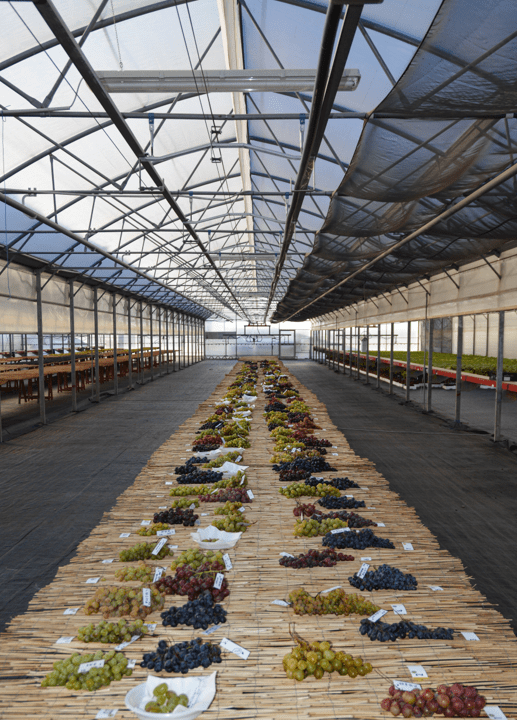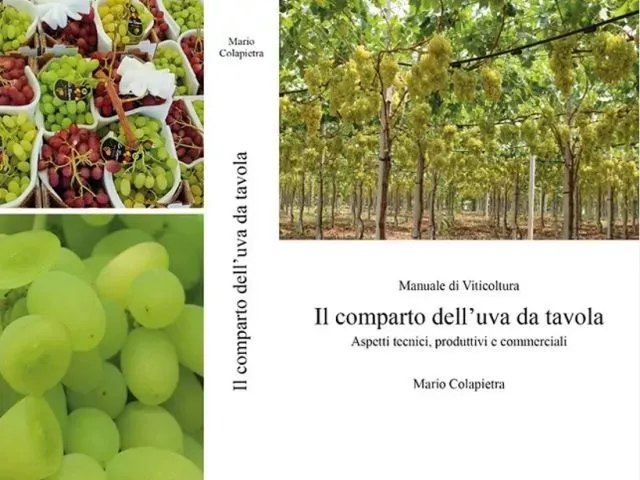The table grape of the future will speak Italian again. This is the commitment of VCR, Vivai Cooperativi Rauscedo, which for ten years has been investing in a genetic improvement program aimed at combining seedlessness, disease resistance, aromatic qualities, and harvest periods suitable to meet the demand of the most profitable markets.
The 26th Congress in Bari
The fruits of this intense activity will be seen in the fields starting from next summer, and the benefits of the new trial varieties were anticipated by Vincenzo Cuoccio, VCR manager for Puglia, Basilicata, and Calabria, during the 26th national congress on table grapes organized by Mario Colapietra in Bari on February 13th.

"The changing conditions and needs - as Cuoccio testified - of table grape viticulture should encourage strong support for experimentation on new resistant varieties and also on new resilient rootstocks of the M series in combination with table grapes, a topic on which research is somewhat static."
For years, it has been emphasized the need for Italy to adapt its varietal offer in order not to lose further market share, and initiatives like the national congress provide an opportunity to strengthen the supply chain.
Colapietra, who for 36 years was a leading figure in research on table grapes at the former Experimental Institute for Viticulture of the Ministry of Agriculture (now Crea VE in Turi - Ba), remains an incurable optimist. In his recent book "The table grape sector," despite the clear overtaking by countries like China and India and the strong growth of Egypt, Turkey, Iran, Uzbekistan, and South America, he urges to still consider Italy as a reference point for quality table grapes.
The rise of emerging countries
While all these countries are growing in terms of surface area and yields, Italy, despite having a strong historical and technical basis for fresh consumption grapes, has experienced a depressing trend of reduction in recent decades. The cultivated areas have decreased from almost 70,000 hectares at the beginning of the millennium to 44,500 in 2015, bouncing slightly to about 47,000 in 2023, with 25,000 in Puglia and 18,000 in Sicily (Cso processing on Istat data). However, Puglia seems to be experiencing an encouraging trend reversal in 2024, especially thanks to the success of seedless varieties like Autumn Crisp.
The embarrassment of varietal choice
For several years, traditional varieties have not allowed farmers to cover production costs, and the innovation of "seedless" cultivars introduced since the 1990s has been hindered by the need to develop adequate technical protocols to improve their quality and yields.
In recent decades, the table grape market has become increasingly globalized, with distribution networks becoming more demanding in terms of sustainability and facing fierce competition from new producing countries, especially for early harvests in May-June.
Italy has thus suffered the consequences of chronic flaws such as the lack of a supply chain mentality and the limited respect for research activities, both public and private. Despite the stimulus of the arrival of high-quality seedless varieties from abroad (with no need for thinning of the berries) like SugraOne (Thompson seedless x Cardinal) or Crimson (Emperor x C33-199), producers have remained indecisive about the direction to take for new plantings.
Autumn Crisp, the first grape with a name
At least until the arrival of Autumn Crisp (Princess x Dovine), a late, crunchy, seedless variety, characterized by its sweet and aromatic flavor, appreciated for its firm flesh and ability to maintain excellent shelf life after harvest.
This variety has also benefited from the global marketing initiative undertaken by the Californian breeder Sun World, which holds the rights to it. Autumn Crisp has thus become the first table grape to be promoted, by name, to consumers worldwide, following the successful examples in the kiwi industry with brands like Zespri Gold or the Pink Lady apple.
While advantageous for those who cultivate it, this also poses a significant risk for Italian producers: disillusionment could come from the word "global," which contradicts all efforts made to support the uniqueness of our fruit and vegetable productions to counter the competition from countries with significantly lower production costs.
Sustainability, quality, and uniqueness

VCR has a predisposition for innovation in its DNA and in recent years has transferred all the experience gained in the wine grape sector to table grapes.
The breeding program launched in Rauscedo has developed 185 cross combinations between 2017 and 2022, evaluating over 8,000 seedlings. From these, 36 selections have been advanced for field trials in Puglia since 2022 and another 18 since 2023.
VCR's objectives are to obtain table grape varieties characterized by:
High (polygenic) resistance to downy mildew and especially powdery mildew;
Tangible reduction in phytosanitary treatments;
Aromatic and polyphenolic profiles comparable/typical or superior;
Good agronomic characteristics;
Tolerance to botrytis, secondary diseases, abiotic stress,...
Large clusters and berries;
Crunchiness;
Sugar content and aromaticity;
Seedlessness;
High shelf-life.
The tasting trial results have also revealed an extraordinary biodiversity of flavors (fruity, tropical, floral): the new renaissance of Italian table grapes is coming, stay tuned.
Colapietra's manual

Twenty-two chapters, 800 pages, and a rich and detailed photographic collection: these are the numbers of the new viticulture manual by Mario Colapietra: "The table grape sector - Technical, productive, and commercial aspects."
The book, published in June 2024 and supported by VCR, Vivai Cooperativi Rauscedo, starts from industry statistics, addresses all agronomic issues related to vineyard planting, grafting, pruning, fertilization, irrigation, phytosanitary defense (including biological), describes the characteristics of new varieties, and delves into marketing aspects such as packaging management, packaging, and grape commercialization.
